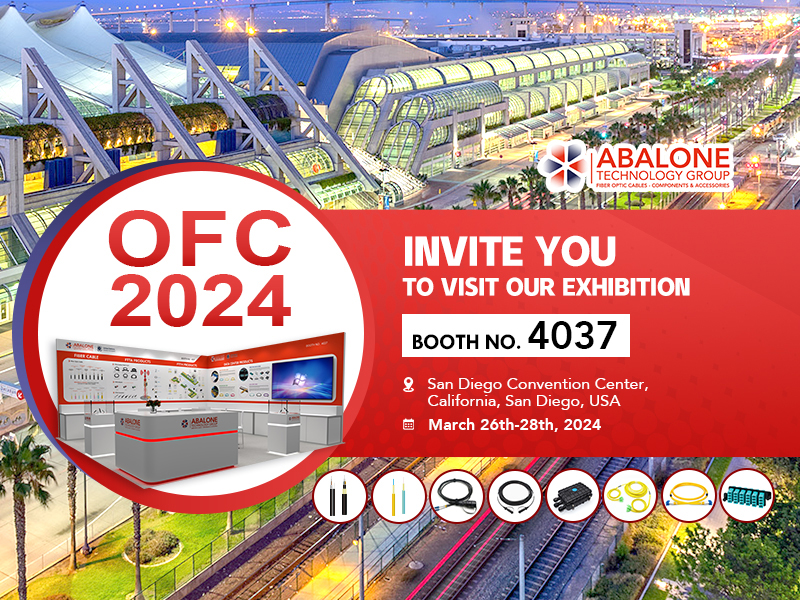With the rapid advancement of technology, data centers are developing at an unprecedented speed. The demand for high-speed data transmission is growing exponentially, resulting in the need for efficient and reliable cabling solutions. DAC ,AOC,ACC and AEC are play a vital role in enabling seamless communication and data transfer.800G data centers are on the rise.
What is DAC,AOC,ACC and AEC?And their application in 800G data center.

Direct Attached Cable (DAC) mainly refers to passive direct attach cables, which use conductive copper wires for a direct connection between two ends. The internal structure of DAC typically involves a shielded Twinax design and does not include active components. DAC copper cables are primarily utilized for intra-system rack connections, linking compute servers to storage subsystems, with a maximum length of 3 meters.The rise of large and hyperscale data centers has resulted in greatly increased power capacity and shortened vertical cabling distances for individual server racks. Therefore, DAC cabling solutions for 800G data centers are widely used to connect servers within the rack. They operate over passive copper wires, ensuring a high-quality connection without the need for additional power. DACs are available in two branch types: direct connect and branch connect, and are available for OSFP and QSFP-DD.
Active Optical Cable (AOC) utilizes optical fiber as the transmission medium, converting electrical signals into optical signals. Since the fiber core of AOC is made of insulating material, it is less susceptible to interference from electromagnetic, lightning, or radio signals during data transmission. 800G AOC is ideal for distributed data centers and cloud environments by increasing bandwidth, minimizing latency, and reducing power consumption. In addition, VCSEL on PAM4 DSP technology optimizes performance while reducing cost and complexity. The 800G AOC point-to-point interconnects on the market offer speeds of up to 800Gbps, distances of up to 100 meters, and support a single 800Gbps interface in a breakout cable configuration to connect two 400G QSFP-DD modules. This breakout cable is ideal for connecting next-generation switches running at 800Gbps to existing ports running at 400Gbps without the need for additional conversion or mapping.
Active Copper Cable (ACC) refers to active copper cable, whose connection medium is the same as that of DAC. However, an active signal driver or equalizer chip is added inside the cable. These active chips can compensate for part of the loss caused by copper transmission, so they can transmit 2 to 3 times farther than DAC.
Active Electrical Cable (AEC) is a specific type of active DAC. It contains a silicon chip inside the cable assembly, reconditioning the critical high-speed signals. The re-timers can clean, remove noise, and amplify the signal at the beginning and end of the transfer, ensuring high-speed transmission over longer distances.
At high transmission rates, the loss of copper cables increases and the interconnection length cannot be met, so ACC and AEC are introduced. ACC uses a Redriver chip architecture to adjust Rx gain through CTLE equalization, which is more like an active cable amplifying analog signals. AEC uses a retimer chip architecture that can not only amplify and equalize the Tx and Rx ends, but also reshape the signal at the Rx end. ACC and AEC are also used to connect TOR and servers. They simplify the patching process and provide a cost-effective way to deliver greater bandwidth over short links.
Direct Attached Cable (DAC) includes passive copper cable, Active Copper Cable (ACC) and Active Electrical Cable (AEC). They are much cheaper than fiber optics and can significantly reduce the cost of data centers. Compared to DAC, Active Optical Cable(AOC) is lighter, smaller, has lower bit error rates, and has longer transmission distances. DAC and AOC are widely used in short distance interconnections of network cards, switches, servers, supercomputers, cloud computing and data centers. All these cables are available in both direct and drop connection types.
In addition to DAC and AOC, 800G optical cable can also provide excellent performance and efficiency for high-speed data transmission and is suitable for high-density cabling solutions. The advantages of optical cables are very obvious, namely minimal delay, low power consumption, and longer transmission distance, ensuring that long-distance connections are more stable and reliable.
800G data center deployments require careful consideration of different types of cables and their specific characteristics. Different 800G cabling solutions have different advantages and should be selected according to the specific requirements of the network. By selecting the right cable types and taking into account factors such as bandwidth, distance and cost, data centers can provide the connectivity and support needed for seamless operation at 800G speeds.







